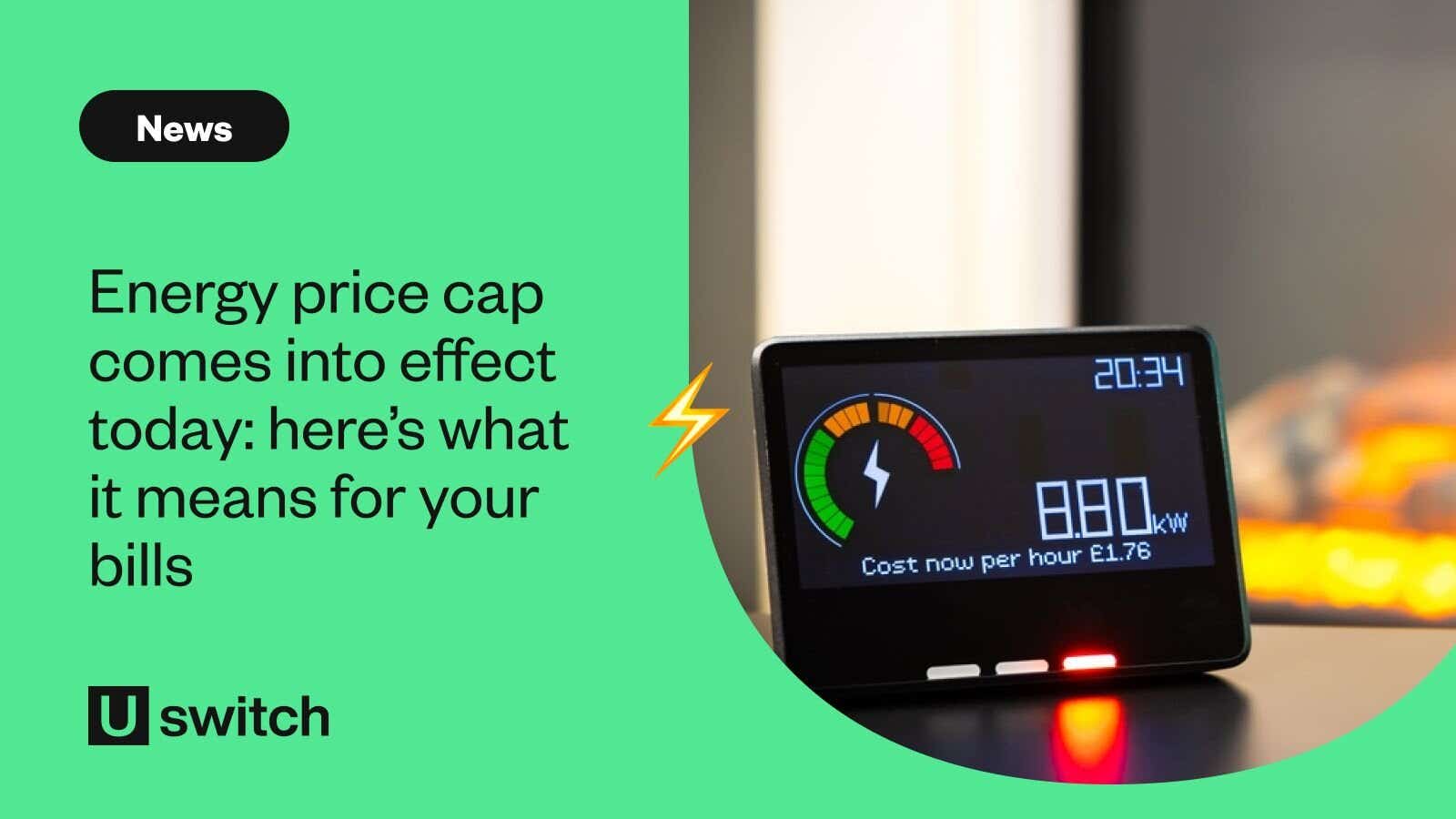Energy price cap comes into effect today: here’s what it means for your bills


What's changing about the price cap today?
The new energy price cap comes into effect today. It’s rising by 2% from £1,720 to £1,755 for the period from 1 October to 31 December. It will then change again on 1 January 2026, but at this point we don’t know whether it will increase again or come down.
How does the price cap affect me?
The price cap affects you if you’re on a standard variable tariff because the amount you pay for your energy will almost certainly go up. Suppliers tend to price these tariffs at (or very near) the cap limit, so you’ll probably find that your bills rise by around 2% for this price cap period.
What should I do about a price cap increase?
If you’re affected by the price cap, you should switch. There are deals available that offer savings of more than £200 against the price cap and give you price certainty for the duration of your contract. You should at least run an energy comparison to see how much you can save compared to the amount you’re currently paying.
What does the price cap figure actually mean?
When the price cap is described as being a certain amount per year, that’s for a medium-sized household using an average amount of energy as defined by Ofgem. However, there’s no such thing as an average amount of energy. Everyone uses different amounts of energy, so you need to calculate how much you'll pay based on your usage figures and the unit rates and standing charges set by the cap.
Ultimately, it's not a cap on your bills. If you use more energy than the advertised figure covers, you’ll pay more. If you use less, you’ll pay less.
What will the next price cap be?
We don't know what the next price cap will be yet, and it's difficult to predict because if wholesale prices rise quickly, that will push the price cap up quickly as well. At the time of writing, there's no suggestion it will be a big increase or a big decrease.
The next cap will be announced by 25 November to come into effect on 1 January. You can start saving now, though. Click below to run an energy comparison and see how much you could save.

Run an energy comparison
Click here to compare energy prices and get started on your energy switch.
*Average annual cost of the cheapest tariff available on Uswitch compared to the October 2025 price cap: £1,610 vs £1,755, which is a saving of £145 for dual fuel customers. Actual bill size will vary depending on your individual household consumption. Prices based on customers consuming medium energy usage as defined by Ofgem’s new Typical Domestic Consumption Values (TDCV) (2,700 kWh of electricity and 11,500 kWh of gas per year), paying by direct debit, with paperless billing. Prices averaged across all regions. Prices correct as of 1 October 2025. This savings figure excludes any cashback you might be eligible for when switching.